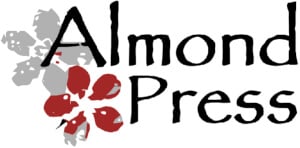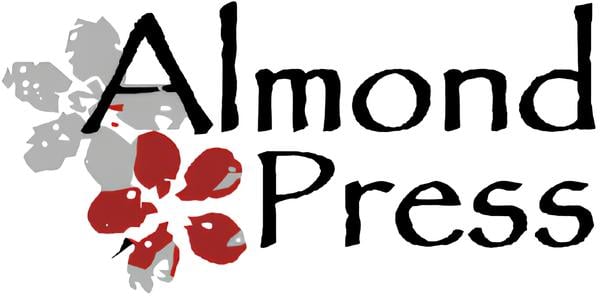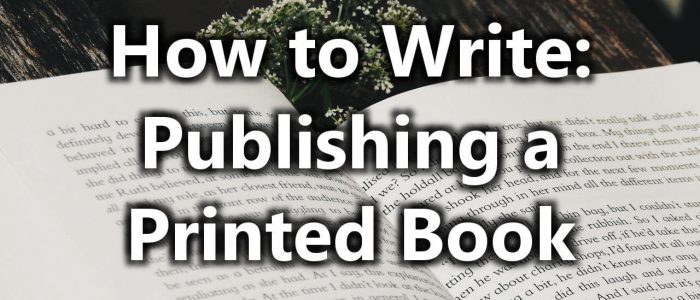How to Write: Self-Publishing a Printed Book
In this article, we’re going to briefly cover the printing options for self-publishing – that is, if you want a hard copy of your book.
Step 1: The Finished Text
This means the book needs to be edited and proofread, with all the chapter headings in the right place, a preface and acknowledgements (if you want them) and any copyright disclaimers done. Make the text as perfect as you can. However, you don’t need to make sure the layout is perfect – if fact, it’s easier if it’s not! Make the margins all standard, and the font standard. This makes the next stage a lot easier.
At this point, you can either turn the text into a print book or an ebook (or both!)
Step 2: Typesetting
This is the point that the text is put into a printable format. The important thing here is that typesetting is not word processing; it’s closer to artwork than it is to writing. The text positioning needs to be exact, and word processors (such as Microsoft Word or OpenOffice) tend to skip the little details that make the text look nice on a printed page.
There are several different pieces of software that can be used for this; one popular one is Adobe InDesign, but there are various free systems available as well. You can actually now use Word, but it’s a very different process to writing, and you usually need to use a template.
Alternatively, there are a number of professionals out there who offer a typesetting service to self-publishers, often with additional services such as cover creation or proofreading as well. If you’re not too sure you want to get into the details of the typesetting process, it’s worth paying for this stage.
Step 3: Thinking About The End Result
There are a couple of different things to consider here:
The size of book you want
A US trade paperback is a different size to a UK A-format (standard) paperback, and there’s a wide variety of additional sizes; think of the difference between a comic or graphic novel and a standard paperback, a hardback or a pocketbook.
The paper quality
A high-quality paper and print will cost you more, but if you’re producing (for example) a limited run, you’d want the quality to be higher than a mass batch.
The binding
If you’re producing a cookbook or a photo book, you might need to be able to lay it flat; for a standard paperback, a standard binding would be fine.
Hardcover or paperback?
The major difference between these is cost for printing, which in turn will affect your prices – but also consider what your readers are likely to prefer. You could always do a print run of both, as many big publishers do.
Bookstore or online only?
It’s notoriously difficult to get into high street bookstores as a self-published or indie author; space on the shelves tends to be reserved for traditionally published authors. However, there are potential options through some of the publishers below.
And then, finally, you get on to the printing!
Step 4: Printing
We previously looked at several platforms that deal in self-published works. However, there are others, and you’re always advised to do your research and compare several options before you decide on who you’re going with.
CreateSpace Lulu Blurb IngramSpark
All four offer distribution to physical stores, but be warned: this only means the book is available to the stores, not that stores will stock it! A major benefit of traditional publishers is that they have deals with bookstores and will be able to automatically get items on the shelves, but it’s always worth asking your local store if they’ll order a couple of copies of your book. However, the big plus of having your book available for physical distribution is that bookstores can order it in if your readers request a copy through them.
Lulu and Blurb both do hardback, but are slightly more expensive as they have to pay a small fee to list items in Amazon’s stores. CreateSpace does not have this fee as it is owned by Amazon, but it doesn’t offer hardback printing. The printing paper, quality and format also varies; if you want a more in-depth idea of the specifics of the printed copies, have a look at this article on WriteHacked that looks at the details of the prints. It’s always worth getting a proof copy of your book to check that you’re happy before it goes to print!
Green Sky & Sparks
by Kate Coe
- What is a writing competition? Why should I pay to enter? - November 15, 2018
- How to Write the Book Introduction to Hook Your Reader - October 7, 2017
- How to Write: Self-Publishing Your Work Online - October 1, 2017



